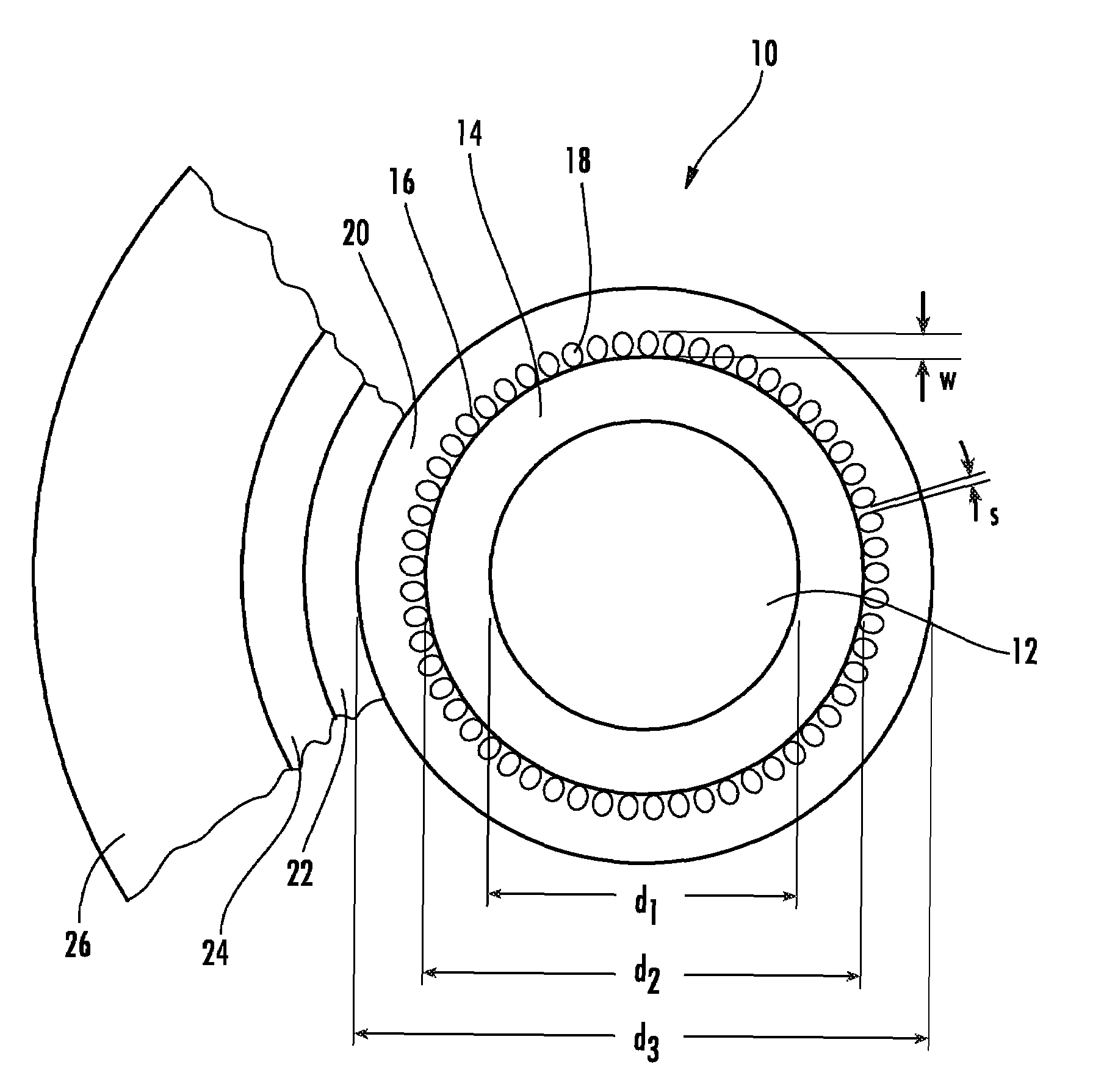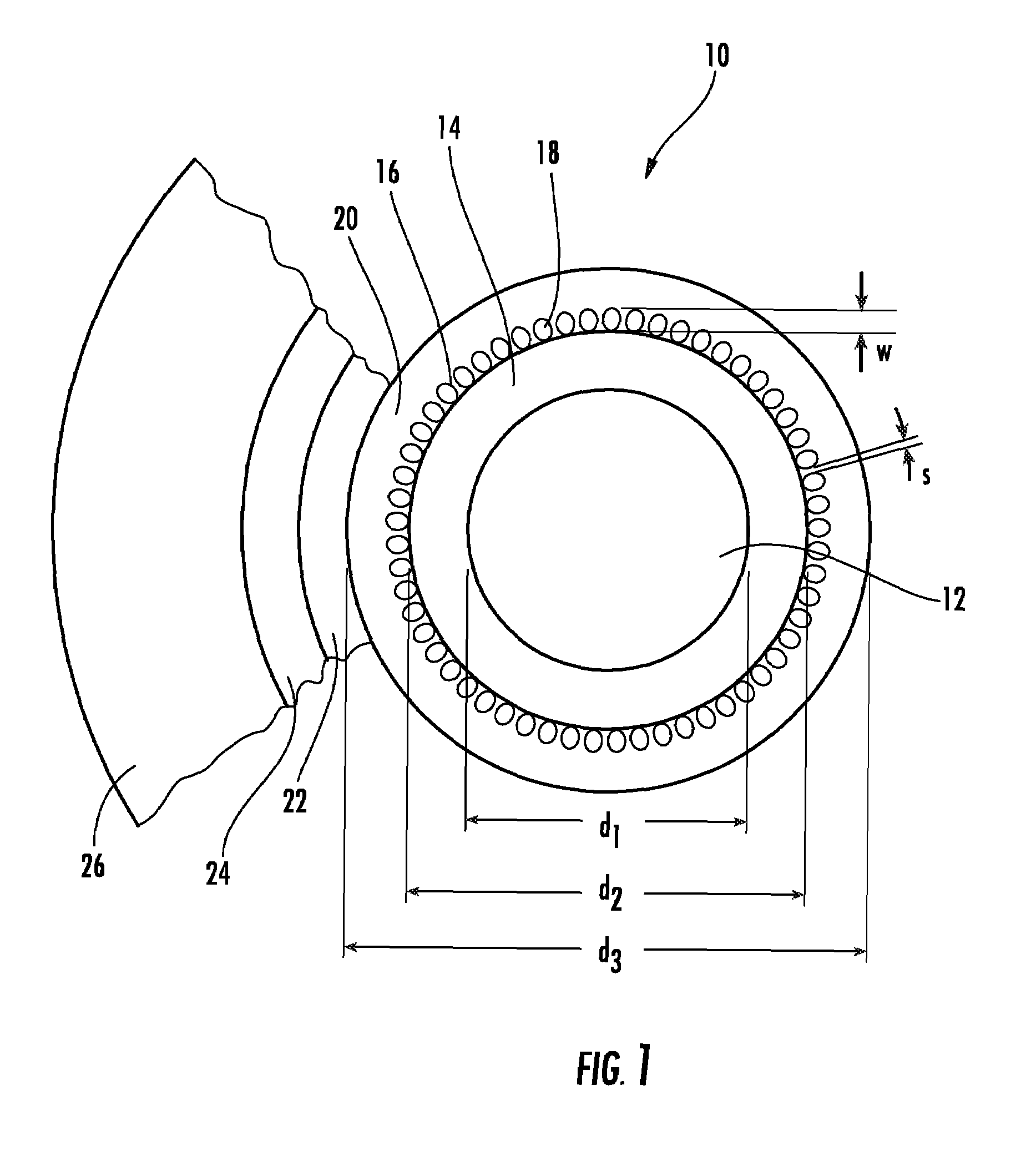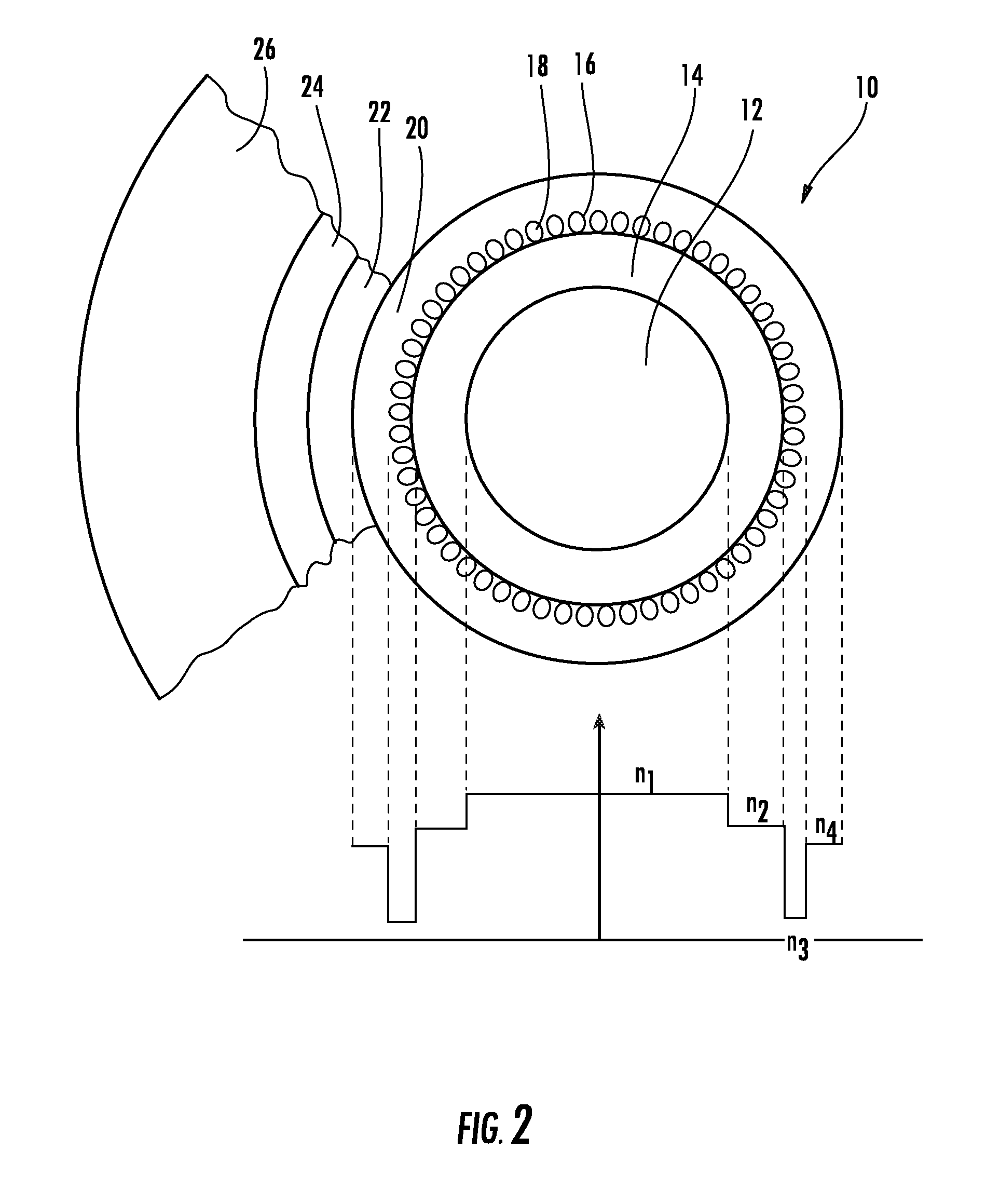Large mode area fiber for low-loss transmission and amplification of single mode lasers
a single-mode laser and fiber-to-mode technology, applied in the field of optical fiber design, can solve the problems of system power loss, system power loss, and signal loss of all optical fibers, and achieve the effect of more reliable and cost-effective coupling and larger fiber-to-mode area
- Summary
- Abstract
- Description
- Claims
- Application Information
AI Technical Summary
Benefits of technology
Problems solved by technology
Method used
Image
Examples
Embodiment Construction
[0038]Referring to FIGS. 1-3, the preferred embodiment of the optical fiber of the present invention is illustrated and generally at 10.
[0039]As shown in its preferred embodiment, the fiber 10 comprises a photonic crystal fiber with an air hole cladding layer. In general, photonic crystal fibers with hole structures are known in the art. Photonic crystal fibers are generally constructed from undoped silica glass. As noted above, guiding is provided by spaced hole structures within the crystal structure of the fiber. Selected portions of the silica glass may contain doping to vary the refractive index.
[0040]More specifically, the optical fiber 10 of the present invention includes a large diameter core (up to 60 μm) 12, and a first cladding 14 wherein the difference between refractive index in the core 12 and the first cladding 14 is very small (Δn<0.002) (low contrast boundary), thus providing a very low numerical aperture core (NA between 0.02 and 0.06).
[0041]The fiber 10 further ha...
PUM
 Login to View More
Login to View More Abstract
Description
Claims
Application Information
 Login to View More
Login to View More - R&D
- Intellectual Property
- Life Sciences
- Materials
- Tech Scout
- Unparalleled Data Quality
- Higher Quality Content
- 60% Fewer Hallucinations
Browse by: Latest US Patents, China's latest patents, Technical Efficacy Thesaurus, Application Domain, Technology Topic, Popular Technical Reports.
© 2025 PatSnap. All rights reserved.Legal|Privacy policy|Modern Slavery Act Transparency Statement|Sitemap|About US| Contact US: help@patsnap.com



